It is a type of agriculture that uses water, nutrients, and sunlight to produce plants. It is a faster, more efficient, and less expensive way to grow crops than traditional methods such as soil farming. Hydroponic farming has become popular in Kenya since it is environmentally friendly, provides fresh produce year-round, and does not require pesticides or other harmful chemicals.
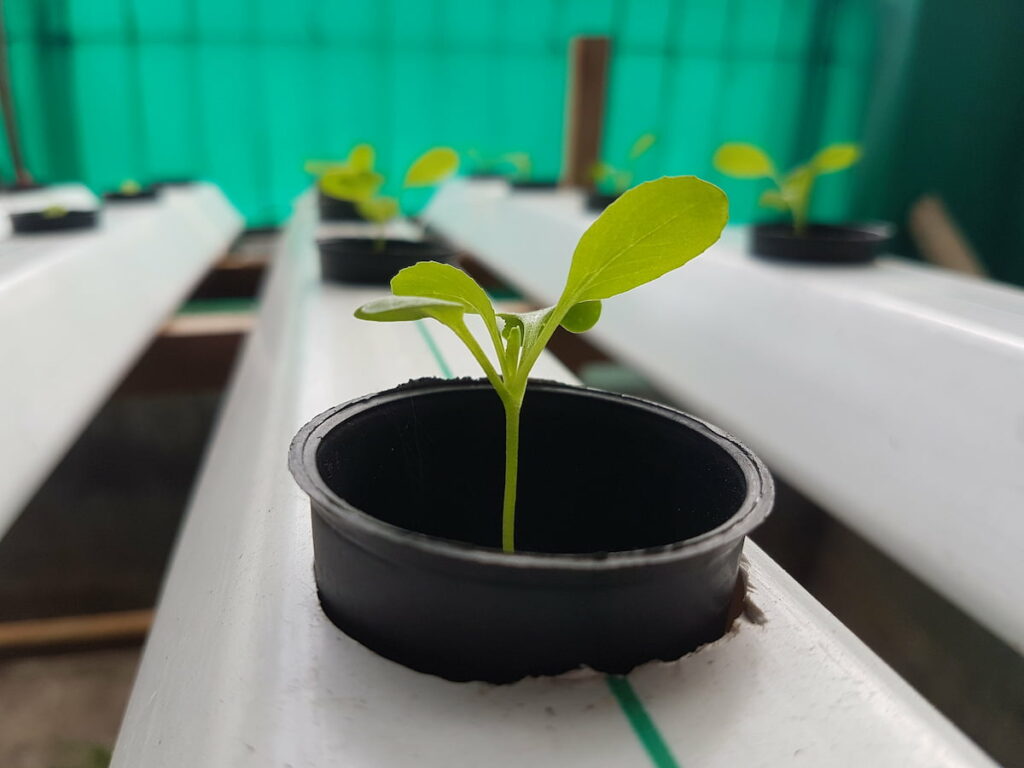
How to start hydroponic farming in Kenya
What is hydroponic farming?
It is a type of agriculture that uses soil-free methods to grow plants in water. This method grows crops such as fruits, vegetables, and flowers in a controlled environment. Hydroponic farming eliminates the need for pesticides, herbicides, and fertilizer. Instead, the plants are grown in nutrient-rich water instead of soil.
Hydroponic farmers use mineral solutions, and air pumps to provide the necessary nutrients and oxygen to the plants. This technology has the potential to help farmers in Kenya grow nutritious foods that are safe for consumption and free from harmful contaminants.
Advantages of hydroponic farming in Kenya
- Hydroponic farming is a growing industry in Kenya with many advantages over traditional farming.
- Hydroponic systems use soilless cultivation methods that require little water, making them ideal for areas with scarce resources.
- They also produce high yields of crops without the need for pesticides or fertilizers and can be adapted to various climates and soils.
- Hydroponic farming is becoming increasingly popular in Kenya because it offers many benefits over traditional methods and is becoming an increasingly sustainable form of agriculture.
How does hydroponic farming work?
Hydroponic farming is a type of agriculture where crops are grown in hydroponic systems, which use water reservoirs and a limited number of nutrients to provide the plants with what they need to grow. This method has many advantages over traditional farming methods, such as increased crop production and fewer environmental impacts. Water circulates plants through small tubes and nutrient pellets in a hydroponic system.
The nutrient pellets contain all the necessary nutrients for the plant to grow and reproduce. This method is beneficial in areas with little access to fresh water or soil. Hydroponic farming can also produce vegetables, fruits, flowers, and herbs. One of the essential benefits of hydroponic farming is eliminating the need for pesticides and other chemicals. This is because hydroponic systems use a limited number of supplemental nutrients instead of chemical fertilizers or pesticides.
Additionally, hydroponic farms do not require large amounts of land or water; therefore, they can be used in places where traditional agriculture would not be possible. As a result, hydroponic farming has many potential applications in Kenya. For example, it could increase food production in areas that are currently difficult to access due to poor infrastructure or lack of resources. Additionally, hydroponic farms could help to reduce environmental impacts associated with traditional farming methods, such as deforestation and soil erosion.
In case you missed it: How To Start Farming In Kenya, Profitable Crops
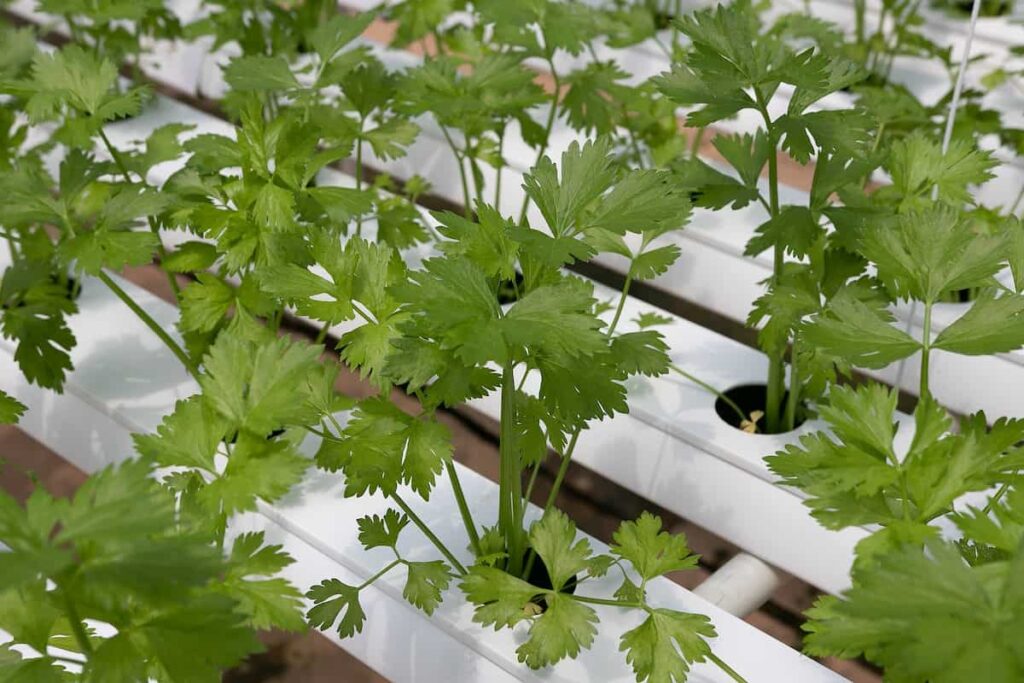
Are hydroponic farms profitable in Kenya?
There is a growing trend of hydroponic farming in Kenya, and for a good reason. This agriculture has many benefits, and the economics can be very favorable. Hydroponic farming does not require land that could be used for other purposes, so it can be a great solution for farmers struggling to find enough space to grow their crops. Additionally, hydroponics produces crops without the need for soil or rainfall, which means they are especially suited to areas with little available water.
Tips for setting up your hydroponic farming in Kenya
- Choose the right location for your hydroponic farm.
- Find an area with plenty of sunlight and good drainage.
- Calculate your required daily light exposure using this calculator.
- Choose the correct type of container for your hydroponic system.
- Fill your containers with clean water and adjustable media (fertilizer, carbon dioxide, etc.).
- Install an aeration system to improve air flow and oxygenation in the hydroponic system.
- Install a pump to circulate the water around the plants and adjust the level of irrigation according to plant needs.
- Harvest your crops when they reach desired size or when necessary; adjustments have been made to the irrigation schedule (e.g., due to variations in weather conditions).
Steps to start hydroponic farming in Kenya
- In Kenya, hydroponic farming has successfully grown crops for many years. It is a sustainable way to produce food and is considered more environmentally friendly than traditional agriculture. Hydroponic farming in Kenya uses water, air, and sunlight to grow plants. However, there are a few steps that you need to take to get started with hydroponic farming in Kenya.
- The first step is to assess your land area and determine how much space you need for the farm. You will also need to decide what crops you would like to grow. There are a variety of crops that can be grown using hydroponic methods, including fruits, vegetables, flowers, and herbs.
- After you have decided which type of crop you would like to grow, the next step is selecting the right system for your farm. Several systems can be used for hydroponic farming in Kenya, including drip irrigation systems, hoop houses, self-watering containers, and T-bar systems.
- Once you have chosen the system and determined your land area requirements, the next step is acquiring all the necessary equipment. This includes water filters, pumps, timers, controllers, grow lights, etc. The last step involved installing the system on your property and setting up your irrigation channels and drains. Once everything is set up and working properly, it’s time to plant.
In case you missed it: Goat Farming in Kenya: How to Sart for Meat, Dairy, PDF, and Guide
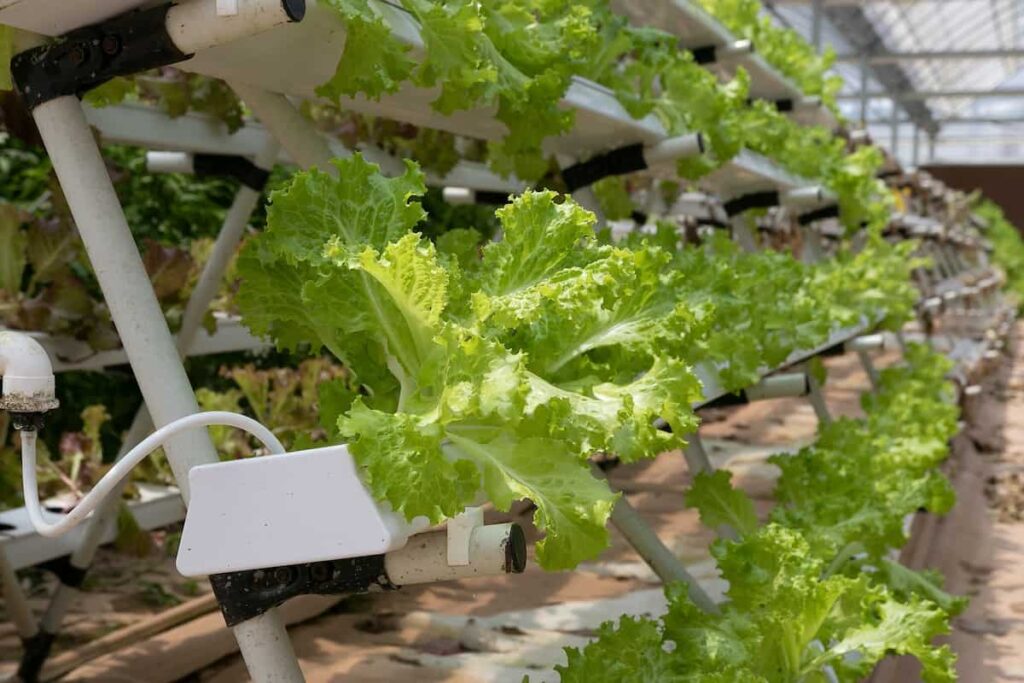
Crops suitable for hydroponics in Kenya
| Cucumbers | Zucchini |
| Tomatoes | Ginseng |
| Green beans | Black pepper |
| Corn | Benas |
| Lettuce | Peas |
| Spinach | Strawberries |
| Arugula |
Cost to set up hydroponic farming in Kenya
- The type of hydroponic system is used
- The size of the farm being developed
- The number of plants being grown
Hydroponic setups in Kenya can cost anywhere from $3,000 to $10,000, and the amount of research needed before investing is significant. For example, one must consider the climate in which they will operate their system and whether they will use high-tech or low-tech methods.
Hydroponic farming setup requirements in Kenya
Setting up hydroponic farming in Kenya is not difficult, but a few requirements must be met to establish a system successfully. One of the most important things to consider is the climate. Kenya has a tropical climate, so that any hydroponic farming will require lots of temperature regulation. Also, proper drainage and irrigation are essential since water is always running through the system. Regarding growing materials, hydroponic farmers can use a variety of crops, including tomatoes, cucumbers, beans, and peas.
In case you missed it: Poultry Farming in Kenya: Breeds, How to Start, and PDF
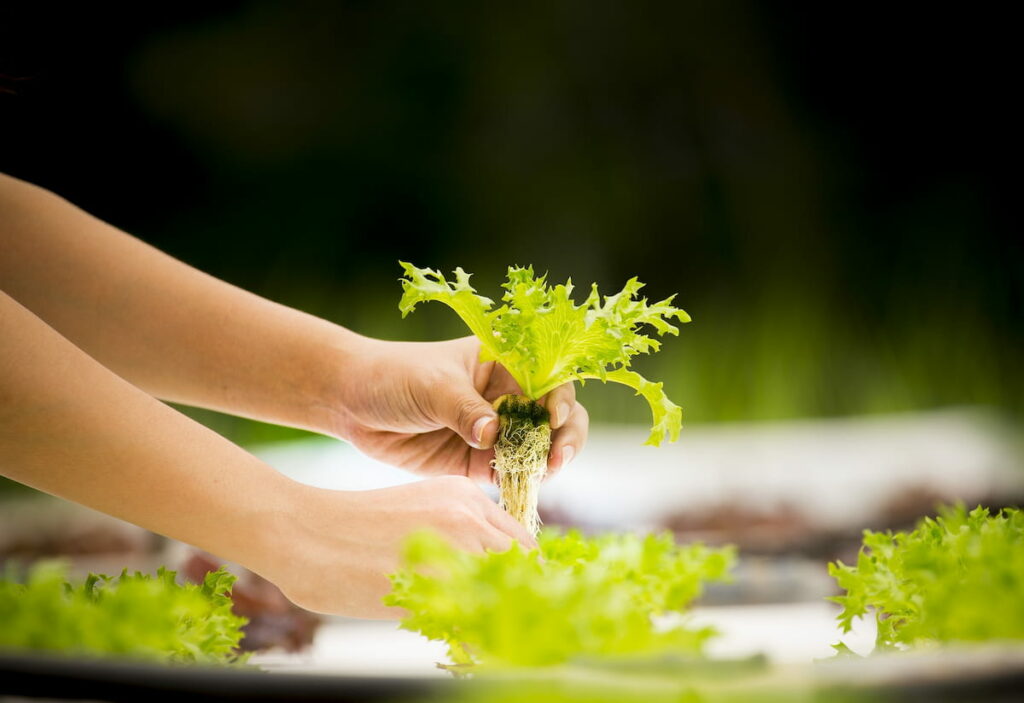
Hydroponic farming subsidy in Kenya
Hydroponic farming is a growing trend in Kenya and has been for some time. Hydroponic farming systems use less water, sunlight, and pesticides than traditional farming practices. As a result, they are more efficient in crop production. The Kenyan government has recognized the benefits of hydroponic farming and has instituted a subsidy program that makes the practice more affordable for farmers. The subsidy program provides financial assistance to hydroponic farmers to help them purchase equipment and supplies necessary for their operation.
The government also promotes hydroponic farming through education programs in schools and by providing information about the system’s benefits on government websites and social media platforms. There are currently around 100 hydroponic farmers in Kenya, which is a small number but growing rapidly. Most of these farmers are in the Western Province, although a few are in Nairobi and Kakamega counties. There is potential for this trend to continue as interest in hydroponics grows among Kenyan farmers.
Types of hydroponic systems in Kenya
There are a variety of hydroponic systems in Kenya, each with its advantages and disadvantages. Some popular hydroponic systems in Kenya include deep water culture, wick systems, nutrient film technique, aeroponics, and ebb and flow.
- Deep water culture is Kenya’s most common type of hydroponic system. This system involves planting plants in large containers filled with deep water to cover the roots. Then, the water is circulated to the plants through root channels made from PVC pipes. This method is relatively simple and can be used to grow various crops.
- Wick systems are another popular type of hydroponic system used in Kenya. These systems involve using small pots filled with soil or plastic beads that soaked up water from a reservoir. The pots are then placed on stands inside a larger container filled with water. As the pot absorbs water, it draws moist air up through the soil into the plant canopy, providing it with nutrients and moisture. This system is very efficient at transferring water and nutrients to the plants, but it can be difficult to keep the pots evenly wet without proper irrigation techniques.
- The nutrient film technique (NFT) is one of the newer hydroponic systems used in Kenya. NFT involves growing plants on sheets of plastic or metal mesh suspended over a reservoir of nutrient-rich solution.
- Aeroponics involves growing plants in the air using small channels with water flowing through them. This system is popular because it is fast and efficient, requiring little land and no sunlight.
- Ebb and flow systems are similar to aeroponics in that plants are grown in channels with water moving through them, but the water basin is constantly recirculated so that the roots of the plants always have access to fresh water.
Choose the right hydroponics media in Kenya
- When starting with hydroponic farming in Kenya, it is important to choose the right media. Several media types are available, each with its benefits and drawbacks. Selecting the right media type will help you achieve the best results from your hydroponic farming operation.
- One of the popular hydroponic media is organic matter. This is composed mainly of organic materials, such as leaves, plant fibers, etc. Organic matter helps improve soil structure and fertility, providing adequate nutrients for your plants. However, organic matter is not always available in Kenya, so other media types can also be used.
- One alternative to using organic matter is a synthetic potting mix. Synthetic potting mix is made up of various chemical additives that help to improve plant growth and development. It is generally cheaper than using organic matter, but it can also be less effective due to the additives contained in it.
- Other types of media that can be used in Kenyan hydroponic farming include sand, gravel, vermiculite, and clay pellets. Sand and gravel are composed primarily of small rocks that help improve drainage and aeration in the growing medium. Vermiculite and clay pellets are derived from mineral deposits that provide essential nutrients for plants.
In case you missed it: Greenhouse Farming in Kenya: How to Start, Crops, Construction Cost, Profits, and Subsidy
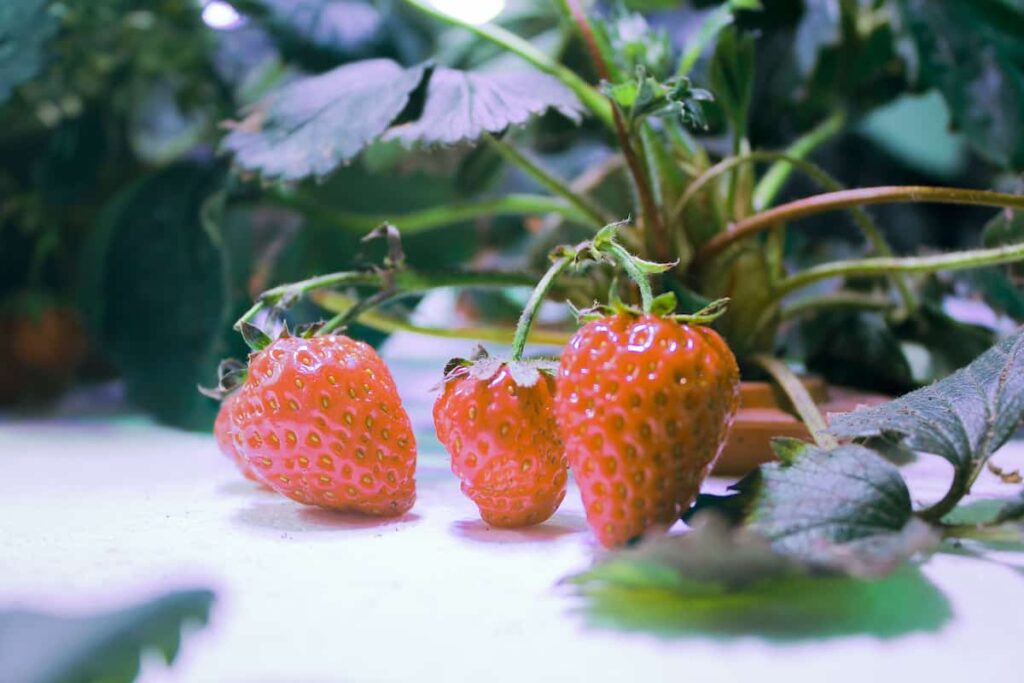
Hydroponic farming problems in Kenya
It uses water, light, and air instead of soil to grow crops. The benefits of hydroponics include higher yields and less dependence on the land, making it an attractive option for countries with a high percentage of farmland used for crop production. However, hydroponic farming has also been found to be problematic in Kenya. There are several reasons for this. First, hydroponic systems require a lot of water, which can be difficult to find in dry areas like Kenya.
Second, the light necessary for photosynthesis is not always available in Kenya, so hydroponic crops often suffer from low yields. Third, Kenyan soil is very acidic and poorly suited to hydroponic cultivation, so many hydroponic farms have had to use special additives to make the plants grow. Fourth, Kenyan hydroponic farmers face competition from traditional farmers who still rely on traditional methods and land resources.
How is hydroponic farming performed in Kenya?
Hydroponic farming is a popular form of agriculture where crops are grown in water instead of soil. The results are healthier plants with a longer shelf life than those grown in traditional soil-based farming. In addition, hydroponic farming is often used to grow vegetables, fruits, and flowers in countries with warm climates. The main components of a hydroponic system are an automated nutrient solution delivery and distribution system, irrigation systems, LED lighting, and controlled environment chambers (CCs).
The nutrient solution delivery and distribution system allows the system to mimic the natural cycle of rainfall and sunlight. Irrigation systems distribute the water throughout the plants to get the necessary water and nutrients for growth. In addition, LED lighting helps to maintain a consistent temperature within the CCs which is important for healthy plant growth. Hydroponic farming has many benefits over traditional soil-based farming. The main benefit is that hydroponic crops don’t need as much fertilization, which can be costly.
In case you missed it: Sheep Farming in Kenya: How to Start, Breeds, Loans, Zero Grazing, and Feeding for Beginners
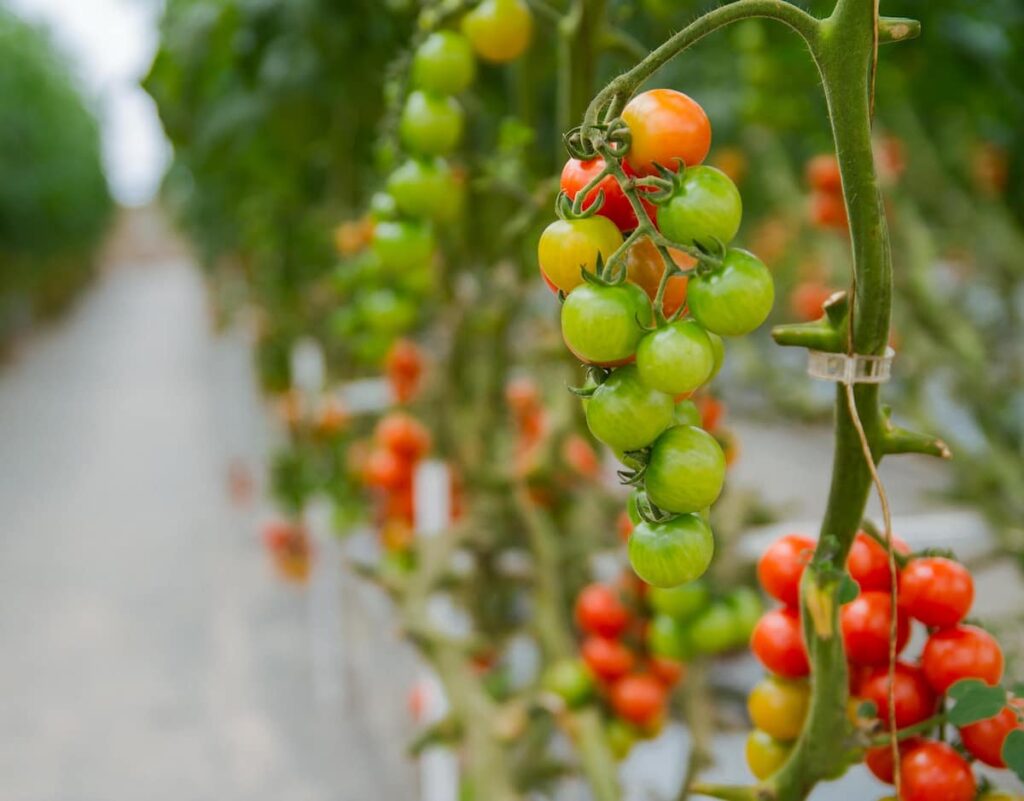
Hydroponic farming challenges in Kenya
- One challenge that hydroponic farmers face in Kenya is access to quality soil. Soil is vital for traditional agriculture, but it is not necessary for hydroponic production. Some farmers have begun growing crops using recycled materials, such as coffee grounds and rice hulls, to overcome this challenge.
- However, hydroponic farming in Kenya presents several challenges. One major challenge is the availability of adequate hydroponic growing space. Outdated agricultural land legislation limits the size of land plots that can be developed into farms, which makes it challenging to find large enough spaces to grow crops using hydroponics. Additionally, the Kenyan climate is not ideal for hydroponic farming, with high temperatures and frequent rainfall. These conditions can damage plants and reduce yields.
- One of the main challenges is irrigation. Farmers need to find ways to irrigate their crops using less water, which can be difficult in an arid climate like Kenya. Additionally, diseases and pests are common problems for hydroponic farmers, who must frequently spray their plants with pesticides or use other forms of protection.
- Another challenge is financing. Hydroponic farms require a significant initial investment, and many do not have access to loans or credit facilities to finance these projects. However, some hydroponic farming companies have developed financing mechanisms to overcome this obstacle.
- Another challenge is marketing hydroponic products in Kenya. Hydroponics is not well-known among consumers, and most people do not understand what they are or how they work. Efforts are being made to educate consumers about the benefits of hydroponics and promote its adoption as a mainstream form of agriculture.
- Hydroponic farming is a growing industry in Kenya that benefits from the country’s favorable climate and fertile soil. However, there are several challenges that farmers must overcome to adopt this type of farming successfully.
- Despite these challenges, hydroponic farming is a growing industry in Kenya and has the potential to provide much-needed food security for the country’s population.
Conclusion
Hydroponic farming is becoming increasingly popular in Kenya as the country faces challenges such as a shortage of land and erratic weather. Hydroponic farming allows farmers to grow crops indoors using controlled water and air temperatures. This method is less environmentally damaging than traditional farming methods, and it has the potential to provide food security for Kenyan families who lack access to land or who are unable to farm due to environmental factors.
- How to Build a Low-budget Goat Shed: Cheap Ideas and Tips
- Goat Farming Training Programs in India: A Beginner’s Guide
- Types of Pesticides Used in Agriculture: A Beginner’s Guide
- Economical Aquaculture: A Guide to Low-Budget Fish Farming
- 15 Common Planting Errors That Can Doom Your Fruit Trees
- How to Make Houseplants Bushy: Effective Tips and Ideas
- Innovative Strategies for Boosting Coconut Pollination and Yield
- Pollination Strategies for Maximum Pumpkin Yield
- The Complete Guide to Chicken Fattening: Strategies for Maximum Growth
- Natural Solutions for Tulip Problems: 100% Effective Remedies for Leaf and Bulb-Related Issues
- Revolutionizing Citrus Preservation: Towards a Healthier, Greener Future
- Natural Solutions for Peony Leaf and Flower Problems: 100% Effective Remedies
- Maximizing Profits with Avocado Contract Farming in India: A Comprehensive Guide
- Natural Solutions for Hydrangea Problems: 100% Effective Remedies for Leaf and Flowers
- The Ultimate Guide to Choosing the Perfect Foliage Friend: Bringing Life Indoors
- From Sunlight to Sustainability: 15 Ways to Use Solar Technology in Agriculture
- The Ultimate Guide to Dong Tao Chicken: Exploring from History to Raising
- The Eco-Friendly Makeover: How to Convert Your Unused Swimming Pool into a Fish Pond
- Mastering the Art of Delaware Chicken Farming: Essentials for Healthy Backyard Flocks
- 20 Best Homemade Fertilizers for Money Plant: DIY Recipes and Application Methods
- How to Craft a Comprehensive Free-Range Chicken Farming Business Plan
- Brighten Your Flock: Raising Easter Egger Chickens for Beauty and Bounty
- How to Optimize Your Poultry Egg Farm Business Plan with These Strategies
- Subsidy for Spirulina Cultivation: How Indian Government Schemes Encouraging Spirulina Farmers
- Ultimate Guide to Raising Dominique Chickens: Breeding, Feeding, Egg-Production, and Care
- Mastering the Art of Raising Jersey Giant Chickens: Care, Feeding, and More
- Ultimate Guide to Raising Legbar Chickens: Breeding, Farming Practices, Diet, Egg-Production
- How to Raise Welsummer Chickens: A Comprehensive Guide for Beginners
- How to Protect Indoor Plants in Winter: A Comprehensive Guide
- Ultimate Guide to Grow Bag Gardening: Tips, Tricks, and Planting Ideas for Urban Gardeners
- Guide to Lotus Cultivation: How to Propagate, Plant, Grow, Care, Cost, and Profit
- Agriculture Drone Subsidy Scheme: Government Kisan Subsidy, License, and How to Apply Online
- Ultimate Guide to Raising Araucana Chickens: Breed Profile, Farming Economics, Diet, and Care
- Bringing Hydroponics to Classroom: Importance, Benefits of Learning for School Students
- Ultimate Guide to Raising Polish Chickens: Breed Profile, Farming Economics, Diet, and Care
- Ultimate Guide to Raising Australorp Chickens: Profile, Farming Economics, Egg Production, Diet, and Care
Interested
interested in hydroponic farming